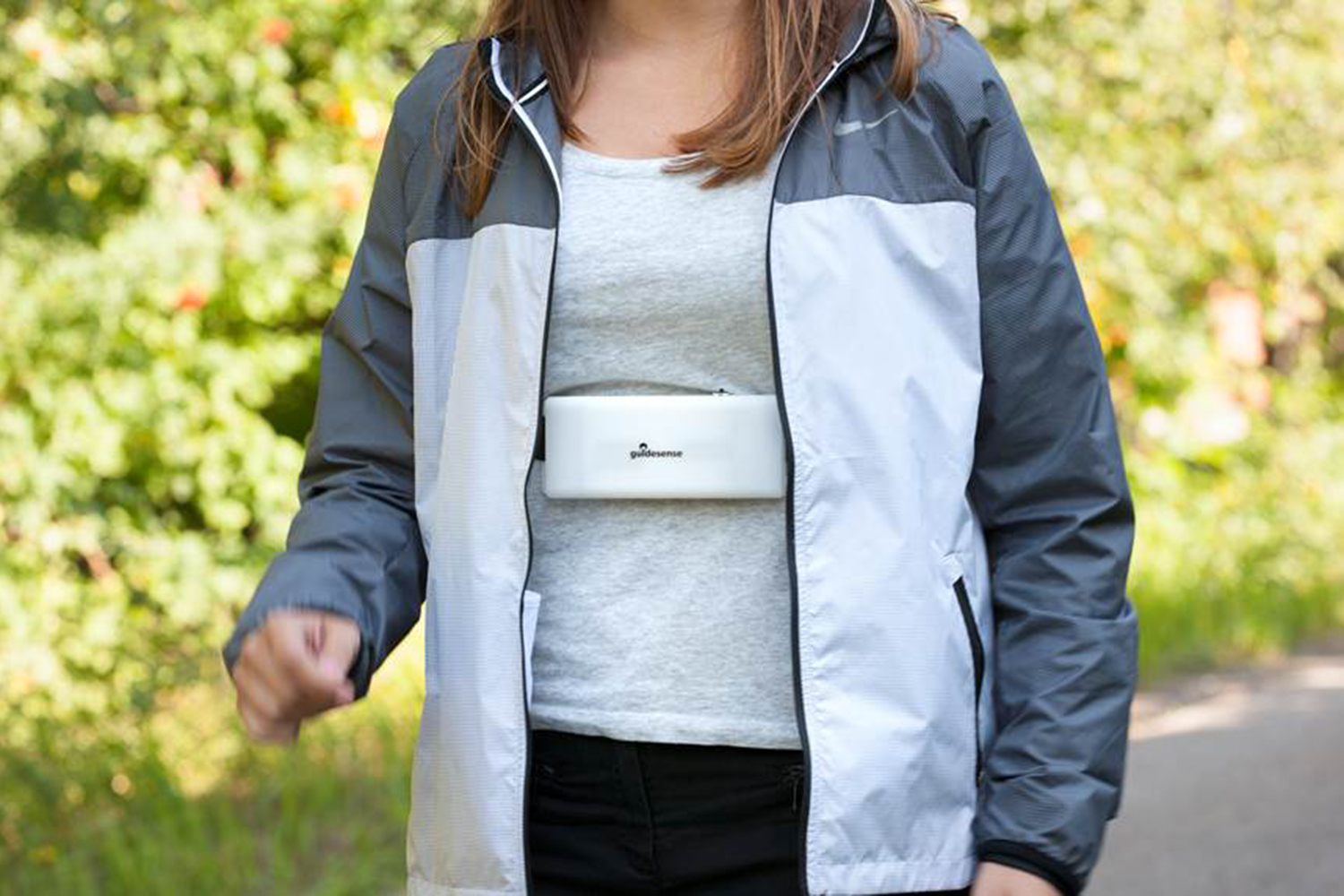
Guidesense is a box-shaped device designed to be worn like a heart-rate monitor by visually impaired people. Using millimeter wave radar sensors, the device can detect obstacles in the environment — including thin branches and bushes — and relay that information back to the wearer via haptic and audio feedback.
The Guidesense concept spawned from a VTT meeting in which project lead Tero Kiuru and his colleagues were reviewing results of a high-frequency radio transmitter. “It seemed that human interaction caused interferences in the radio signal,” Kiuru told Digital Trends, “and one of my colleagues suggested that we could turn the idea around and use the radio transmitter for detecting things.”
After developing a prototype, Kiuru and his team tested the device on 25 visually impaired people, 14 of whom were blind, seven who were partially sighted, and four who were both deaf and blind. The results were overwhelmingly positive — 92 percent of the subjects said Guidesense helped them better perceive their environment and 80 percent felt more confident moving around by themselves. Nearly a third of the subjects said they would begin using the device immediately if possible.
But Guidesense isn’t perfect, as subjects were unsatisfied with distance controls and the haptic feedback. However, Kiuru said these can be addressed through software updates and by simply changing the location of the vibration sensors.
For now, Guidesense is intended for outdoor use, since the many obstacles found indoors would overload the sensors and make it difficult to discern the vibrations and audio feedback. The researchers hope to have a commercial product available by the end of 2017.



